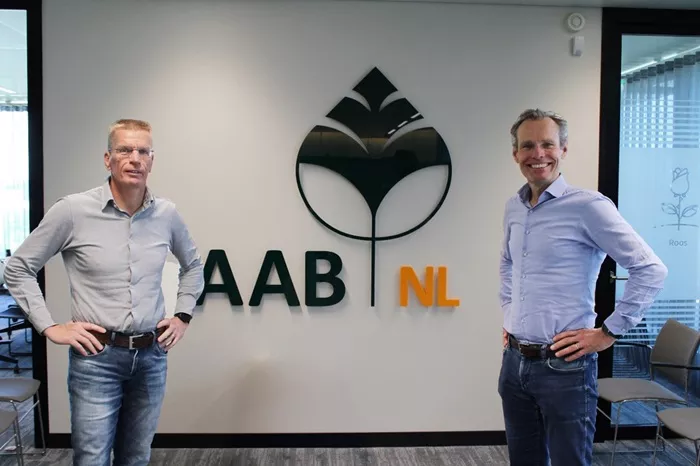AAB, a consultancy and engineering firm specializing in the greenhouse horticulture and energy sectors, is celebrating its 40th anniversary this year. The company was founded in 1985 in a small office in Den Hoorn and has since expanded to an organization with over fifty employees. The celebration will be held on June 13, bringing together colleagues, customers, and partners.
Aad Janssen of AAB emphasized the company’s commitment to sustainable and economically viable solutions. “We don’t create reports just to have them sit on a shelf. Our goal is to make the sector more competitive by offering solutions that clients actually use and that are profitable for them,” he said.
Ownership Transition and Employee Engagement
A significant milestone in AAB’s history occurred in 2008 when the company’s two owners, Bram van Marrewijk and Pieter van Velde, transitioned ownership to the staff through a management buy-out. Since then, employees have had the opportunity to purchase shares if mutual trust is established. “This approach ensures that AAB genuinely stays our own,” said Aad.
From Generalists to Specialist Teams
Over the past decade, AAB has observed a shift in the types of questions coming from the sector, noting that they have become increasingly complex. “In the past, our employees were generalists with broad knowledge. Now, we have true specialists within the technical department, each focusing on specific areas like nitrogen or water permits. This depth of expertise allows us to successfully tackle complex projects,” explained Aad.
Despite these changes, the comprehensive nature of the service remains intact. “What we once referred to as a ‘one-stop-shop’ is now called ‘integral solutions,’ but the essence is unchanged: we provide all the necessary disciplines under one roof,” said Aad.
New Mission and Focus on Sustainability
Ten years ago, AAB shifted its focus to “top companies,” but recently they adopted a new focus. “Our current mission emphasizes growth and development—not just for our clients, but also for our employees. Having the right people around is essential for truly helping our customers,” said Aad.
Sustainability is a key focus for AAB. “We believe it will become essential for production—essentially, ‘a license to produce.’ There are ample opportunities to make sustainability economically viable. We assist companies in becoming more sustainable by not only providing advice but also performing detailed calculations to determine the benefits. We help them understand the financial aspects and identify the most suitable heat sources, whether it’s heat pumps, residual heat, geothermal heat, or storage. This approach ensures that sustainability translates into a competitive advantage and remains economically viable,” said Aad.
The Future of Horticulture
Aad is optimistic about the future of greenhouse horticulture. “The sector is experiencing numerous changes, particularly in energy management. With increasing CO2 taxes, companies without a diverse mix of heat sources will struggle. We already see firms utilizing up to seven different sources, which provides them with flexibility, especially amid price fluctuations. For instance, when electricity is free for seven hours, having the ability to use a heat pump to take advantage of that can be very beneficial,” he said.
AAB also anticipates significant technological advancements. “I hope and expect that AI and automation will greatly impact the industry. Autonomous harvesting of tomatoes or peppers, for instance, should be achievable within the next decade, and this could accelerate progress across the board,” said Aad. However, he is less optimistic about vertical farming: “While the technology exists, the energy consumption is too high for most production crops.” Nonetheless, vertical farming technology is well-suited for breeding, research, young plant production, and products with high turnover rates and limited light requirements, such as lettuce and herbs.
Internationally, AAB anticipates further growth in greenhouse horticulture. “With the right technology, you can grow anywhere,” said Aad. “We’re seeing companies setting up operations close to sales locations, such as just 10 kilometers from a city.” He also envisions a lasting role for the Netherlands, particularly in floriculture. “We can grow more cleanly here than in Southern Europe or Africa, and this will be a key differentiator in the future,” he said.
Looking Ahead
By 2035, AAB hopes to remain employee-owned. “We believe that ownership boosts responsibility and engagement,” said Aad. “By then, AI is expected to handle many repetitive tasks, enabling us to focus more on innovation, content, and quality. Ideally, the infrastructure will also be prepared for fully CO₂-neutral heat and electricity by that time.”
Finally, Aad spoke to the next generation of professionals: “We need enthusiastic, talented individuals who truly want to make a difference. Themes like energy, spatial development, and climate are very relevant and align perfectly with our sector. Fortunately, we see that more young people are beginning to recognize this.”


